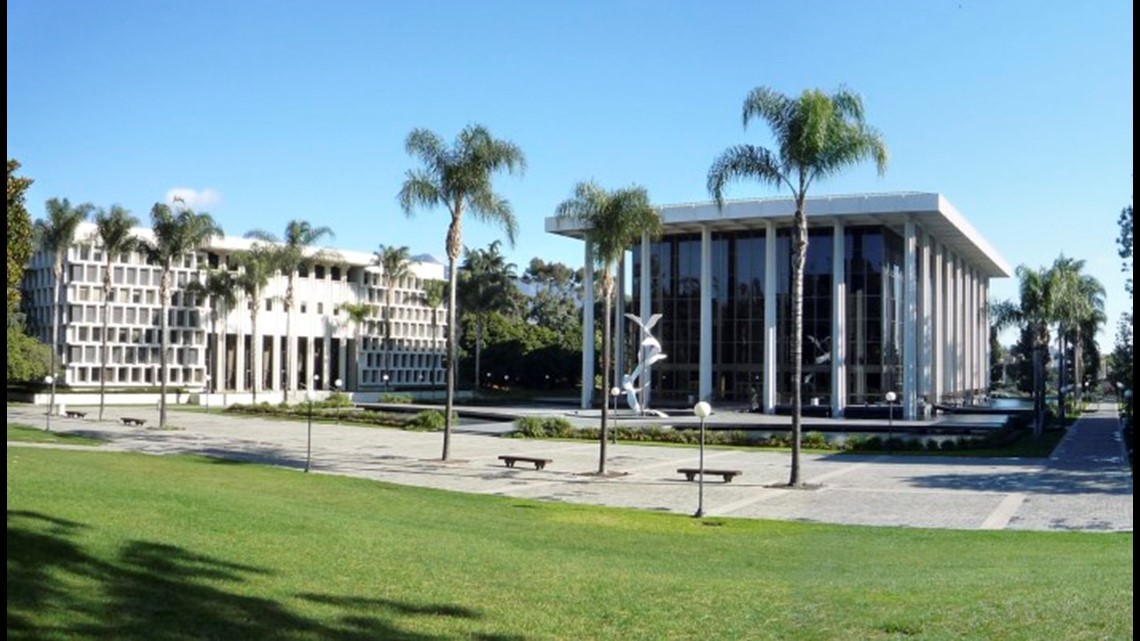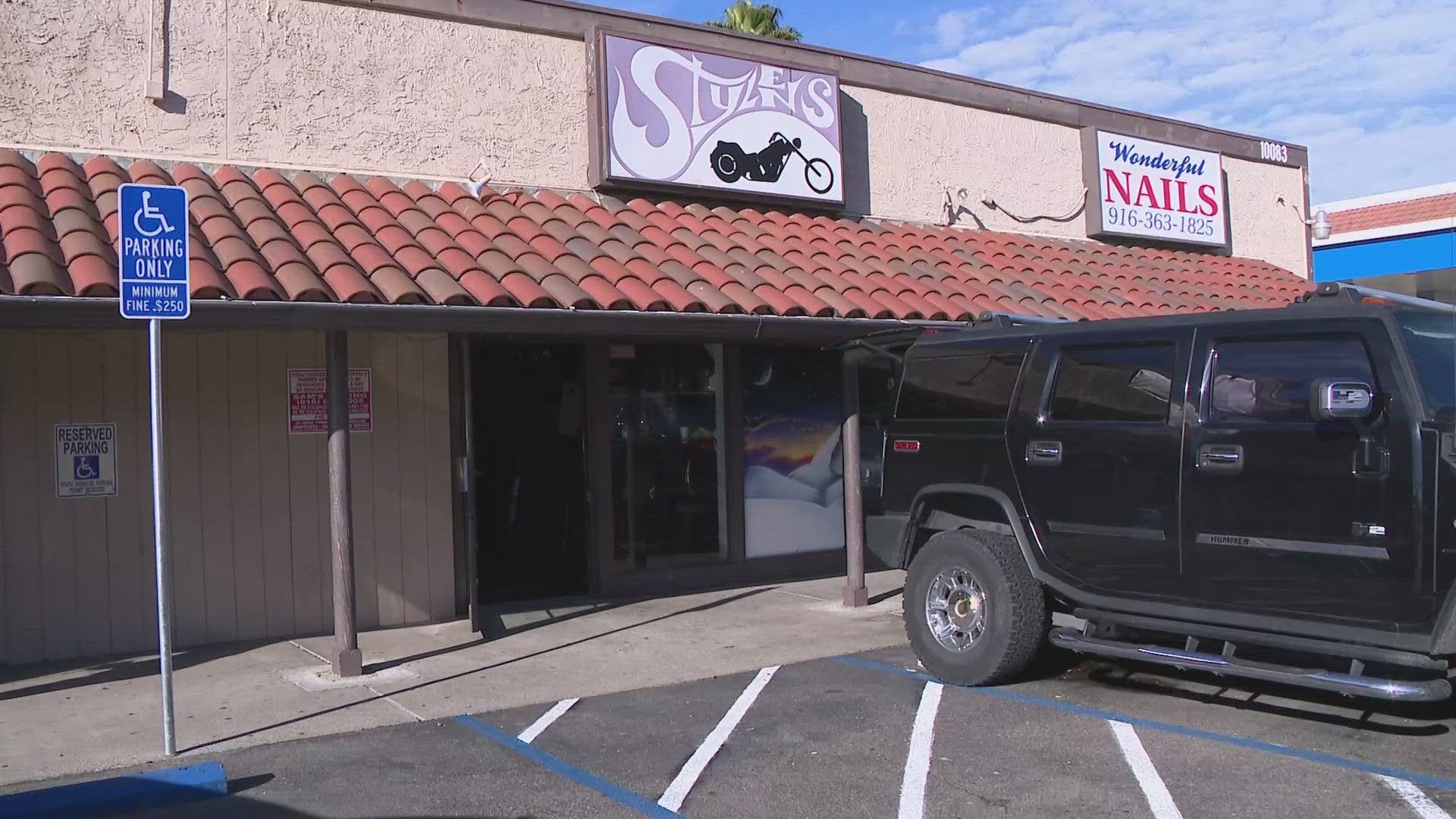Updated Dec. 3, 2020: This morning the U.S. Supreme Court kicked the legal challenge brought by Pasadena’s Harvest Rock Church back down to the lower courts, asking them to reconsider the legal dispute in light of the justice’s recent decision to strike down New York state’s restriction on religious assembly. One legal scholar referred to the court’s two-sentence order as a “creative punt.”
As Gov. Gavin Newsom prepares fresh restrictions on mingling to combat climbing coronavirus cases, he has another hurdle to overcome: the increasingly conservative United States Supreme Court.
Last week the nation’s highest court, joined by its newest justice, Amy Coney Barrett, slapped down rules in New York state that curtailed religious gatherings in the name of public health.
Now it’s California’s turn. An evangelical Christian ministry in Pasadena has brought its own legal challenge to Newsom’s COVID-related constraints on worshippers. Based on the state’s public health “blueprint” in which counties are lumped into color-coded tiers based on transmission risk, 99% of Californians can attend religious ceremonies and other cultural services only outside or online. The court is expected to weigh in by the end of this week.
Since the beginning of the pandemic, priests, pastors and rabbis have been trying and failing to convince judges to strike down California’s public health restrictions on mass gatherings as unconstitutional violations of religious freedom. At least 10 cases alleging religious discrimination have been filed in both state and federal court, according to a CalMatters lawsuit tracker; all have either been dropped, struck down or are still pending.
But the court’s decision last week has many aggrieved church leaders feeling optimistic that California will soon get the same legal comeuppance New York received. That elevates the prospects for existing lawsuits and may embolden more would-be litigants to sue the state.
“We are being deluged with requests from new potential plaintiffs,” said Harmeet Dhillon, a California Republican operative and a regular challenger of the governor’s policy response to the pandemic. ”I expect there is going to be no shortage of work for First Amendment lawyers over the next year.”
The Harvest Rock Church in Pasadena is pleading with the nation’s top justices to temporarily suspend California’s COVID-related restrictions on churches — in their words, to “prevent criminalizing constitutionally protected religious exercise” — while its broader legal fight with the state plays out.
Indoor worship services, which often include singing, touching and exchanging of collection plates or other germ-toting objects, can be prime hotspots for viral transmission. Churches in Sacramento, Los Angeles, Redding and San Diego have been the epicenter of local outbreaks.
The Supreme Court shakeup comes just in time for the holiday season, but also as the latest wave of coronavirus infections shows no sign of cresting.
President Donald Trump upended the court’s ideological balance by choosing Barrett to replace liberal Justice Ruth Bader Ginsberg, who died of pancreatic cancer in September.
That new reality was clear in the ruling that New York State had violated the First Amendment rights of religious observers by capping attendance at houses of worship to between 10 and 25 people. The nine justices split five to four, with Barrett in the majority. It was a stark reversal from this past summer, when a five-member majority including Ginsburg took the opposite position, declining to strike down pandemic restrictions in both California and Nevada.
In balancing the constitutional rights of worshippers and the demands of epidemiologists and elected officials, courts should defer to the experts, Chief Justice John Roberts wrote in May, brushing aside a petition filed by the South Bay United Pentecostal Church in Chula Vista.
Public safety decrees “should not be subject to second-guessing by an ‘unelected federal judiciary,’ which lacks the background, competence, and expertise to assess public health and is not accountable to the people,” he wrote.
That concurrence has been cited 114 times by lower courts “desperate for guidance” as houses of worship file similar lawsuits across the country, said Josh Blackman, a law professor at the South Texas College of Law Houston and a scholar at the libertarian Cato Institute.
With the Supreme Court’s decision in New York, that opinion by Roberts “overnight became irrelevant,” he said. “The old standard is out.”
Justice Neil Gorsuch, a Trump appointee, made that abundantly clear in his scathing concurrence with the majority in the New York case, in which he accused Roberts of “cutting the Constitution loose” with his South Bay opinion. Gorsuch admonished his fellow justices that they “may not shelter in place when the Constitution is under attack.”
There’s only one logical way to explain the court’s 180-degree pivot, said Erwin Chemerinsky, dean of the UC Berkeley law school. Barrett has Ginsberg’s seat.
“I don’t think that any of the justices would have said that the difference (between the two cases) is based on the factual circumstances,” he said.


The Harvest Rock Church and its corresponding network of ministries and Christian university are part of the New Apostolic Reformed movement, in which worship often includes “the laying on of hands” and “speaking in tongues” — spiritual practices that don’t necessarily translate well to Zoom.
But the church’s lawsuit is also political. Led by Pastor Ché Ahn, who often peppers his sermons with pro-Trump political messaging, the church began publicly flouting the state’s public health decrees earlier this summer. In its filing to the Supreme Court, the church’s legal team included a number of barbs designed to depict Newsom as a hypocrite, including a photo of the governor attending a lobbyist’s birthday party at Napa County’s tony French Laundry restaurant.
According to the most recent public health data, 22 of every 100,000 Los Angeles County residents have been hospitalized with COVID-19 symptoms. That places the county — and Harvest Rock — into the state’s most restrictive “purple” tier for public health restrictions in which worship and other cultural ceremonies can only be conducted outside or online.
That same outdoor-only standard also applies to gyms, movie theaters and museums in “purple” counties. Noting the court’s New York decision in its response earlier this week, California Deputy Attorney General Seth Goldstein argued that, unlike the regulations promulgated by New York Gov. Andrew Cuomo, California’s rules do not treat religious institutions more strictly than comparable secular gathering places.
“Indoor activities posing similarly high risks of transmission, such as dining in restaurants, exercising in gyms, or socializing in bars, are subject to the same or greater restrictions; while still others, such as attending indoor concerts or professional sporting events, are prohibited altogether,” he wrote.
California’s rules do allow multiple people to go inside grocery stores, shopping centers and distribution and logistics warehouses even in purple counties.
But those rules are scientifically justified, Goldstein wrote. “Shopping is less likely to involve extended vocal activity; it typically involves fewer close-proximity encounters; and, most important, shoppers are in proximity to each other for only a short period of time, which means that droplets containing the COVID-19 virus are less likely to accumulate into a dose sufficient to overcome the immune system.”
Pastor Ahn declined to be interviewed, but said in a written statement that he was encouraged to be “on the radar of the Supreme Court” and that he and church leaders “are waiting in prayer” and “remain hopeful.”
The South Bay United Pentecostal Church, the evangelical church whose petition was struck down in May, submitted a new filing last week.
The ruling in New York “will most certainly ultimately apply to the draconian restrictions in California,” Paul Jonna with the Thomas More Society, one of the conservative law firms representing United Pentecostal, said in a statement.
Alex Luchenitser with the nonprofit Americans United for Separation of Church and State, which filed a brief with the Supreme Court supporting California’s position, fears that might be true. But he’s hopeful that the few distinctions between the New York and California cases might lead the justices to a different conclusion. If nothing else, he said he hopes the rapidly worsening public health situation in California might sway the justices.
“The pandemic is much worse in California than it is in New York,” said Luchenitser. “Hopefully that would give the court some pause in interfering with the state’s efforts to control the virus and protect the public health.”



